Affiliate disclosure: This post may contain affiliate links. Please see our Privacy Policy.
Thyme tincture is an excellent remedy for cough and respiratory complaints, and it’s easy to make with ingredients you probably already have in your pantry!
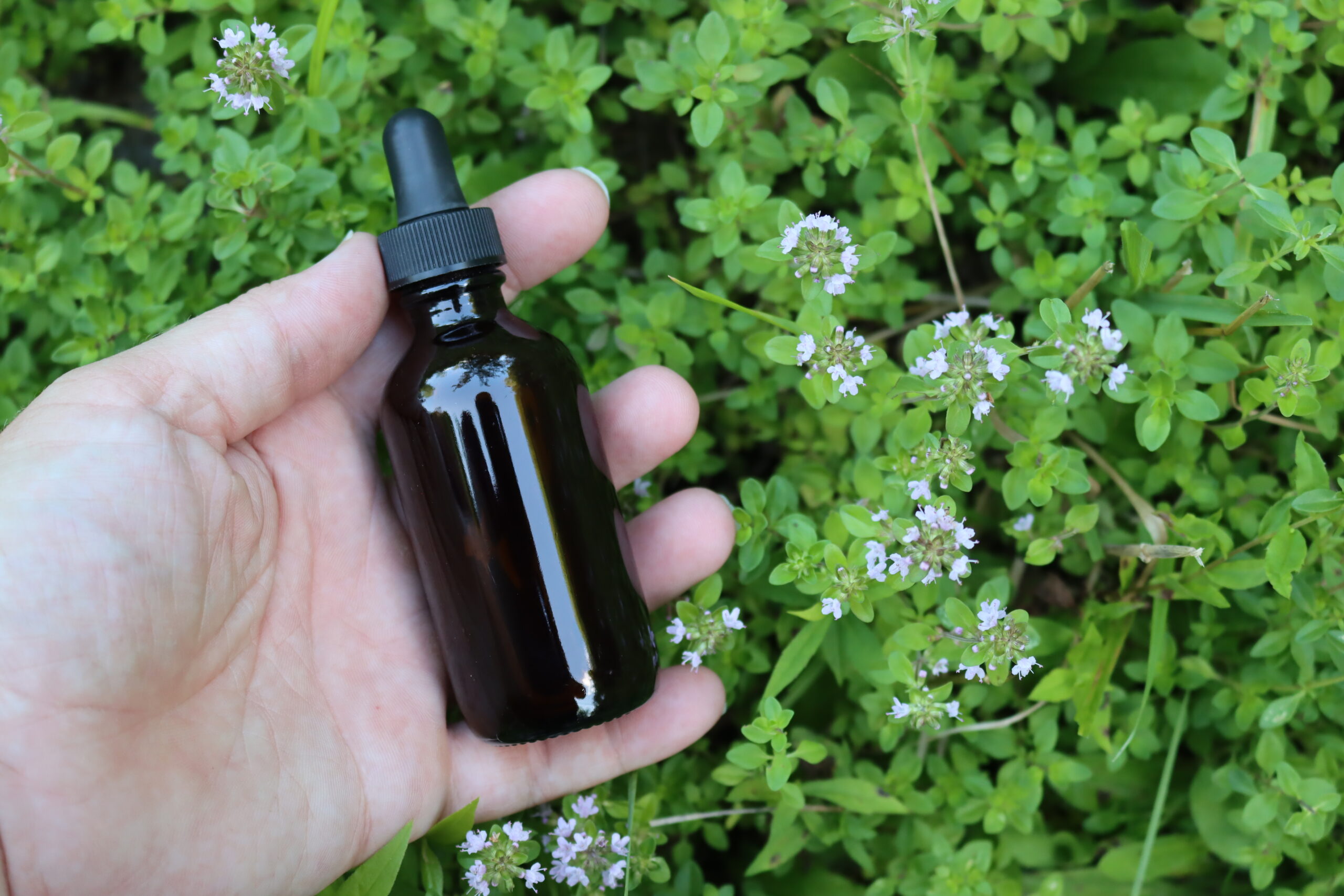
Thyme was the very first herb I used therapeutically, back when I was a pre-teen budding herbalist in the 90’s. I’d asked for herbal books for Christmas, and then when I came down with a bad cold in January I was actually THRILLED!
I poured over the herbal books looking for an answer for my persistent cough and runny nose, but what suburban household keeps a stock of elecampane just sitting on the pantry shelf?
Just because I had herbal books on hand (or the internet these days) doesn’t mean I had all the right herbs on hand to solve my problem. But kitchen spice cabinet remedies came to the rescue.
I was skeptical, but I made myself a big steaming cup of thyme tea.
It took a long time to cool, but I held it and breathed in the wonderful aroma for a few minutes…and my stuffy nose cleared as if by magic. Before I’d even drank a drop, I was feeling much better, and I was completely sold on the magic of kitchen pantry herbal remedies.
These days, I do still use thyme tea, but while it’s pleasant to inhale, it’s not all that great to drink…and sometimes I need a remedy I can just take with me in a convenient dropper bottle. Thyme tincture comes to the rescue, and keeps coughs and sniffles at bay. I actually add thyme tincture to my homemade cough syrups, and the alcohol works as a preservative while the thyme helps the syrup work wonders.
I’ll walk you through how to make your own thyme tincture, with either fresh or dried thyme, but if you’re just looking for a source for the tincture, it can be purchased ready made here. This is the basic process for making thyme tincture, but if you’re looking for more details, I’d recommend the Herbal Academy’s Tincture Making Course which covers everything you could ever want to know about making more than 100 different herbal tinctures, as well as half a dozen tincturing methods.
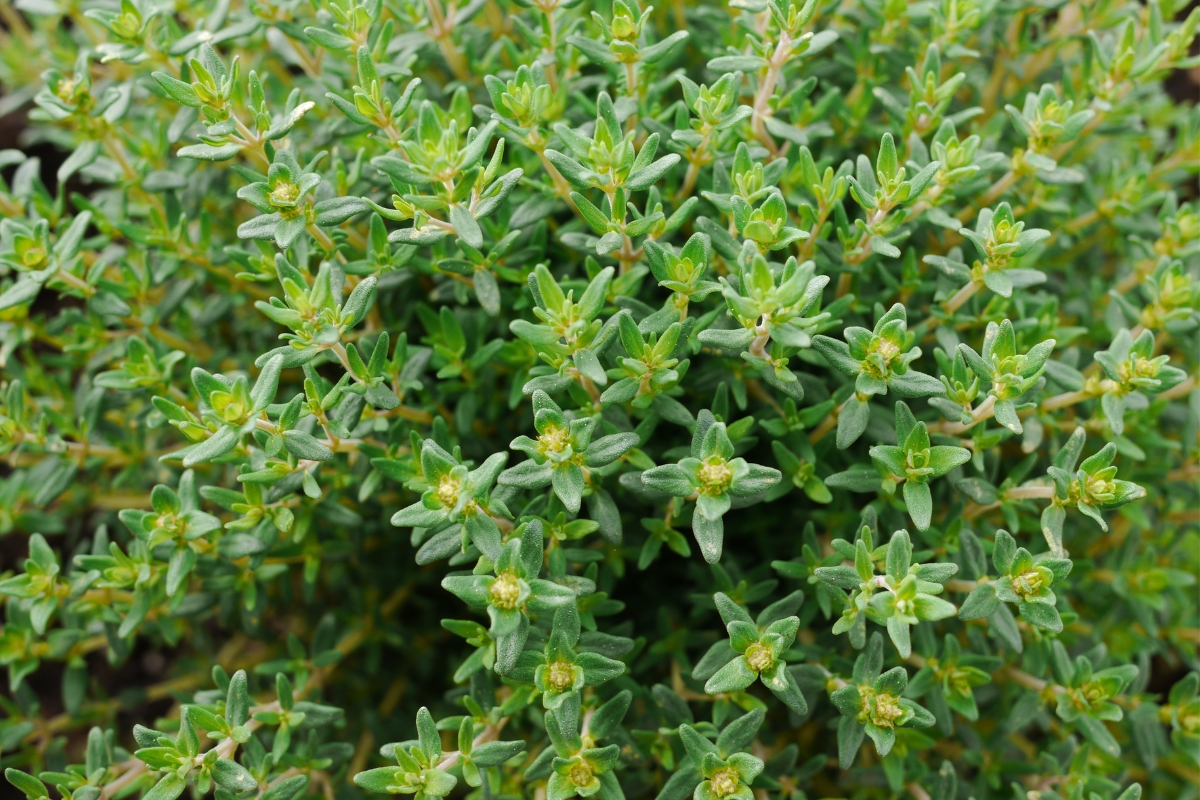
(Always consult your doctor or a clinical herbalist before trying any new herbal remedy, as there’s always the possibility of unintended consequences, allergic reaction, or interactions with other medication. If you’re harvesting wild plant material, make sure you’re 100% confident in your identification and consult multiple sources for your ID. The following is based on my research and experience, but I don’t claim to have any certifications that would qualify me to advise you on your health. Please do your own research and always verify with multiple reputable sources.)
Benefits of Thyme Tincture
So much more than a culinary herb, thyme is an incredibly rich source of phytonutrients, minerals, and vitamins A, B, and C. The main essential oil compound in thyme, thymol, has impressive antimicrobial, antibacterial, antioxidant, and anti-inflammatory properties.
Thyme tincture can be applied to acne-prone skin to prevent and clear up existing breakouts thanks to its strong antibacterial benefits that have been shown to be resistant against certain strains of Staphylococcus, Enterococcus, Escherichia, and Pseudomonas bacteria.
Animal studies have shown that thyme extract may be able to lower heart rate in rats with high blood pressure. In addition to a marked difference in heart rate, cholesterol levels were also reduced.
Thyme has long been used as a folk medicine for respiratory illnesses and recent animal studies are confirming this usage, with research showing that the thyme is a natural decongestant and expectorant.
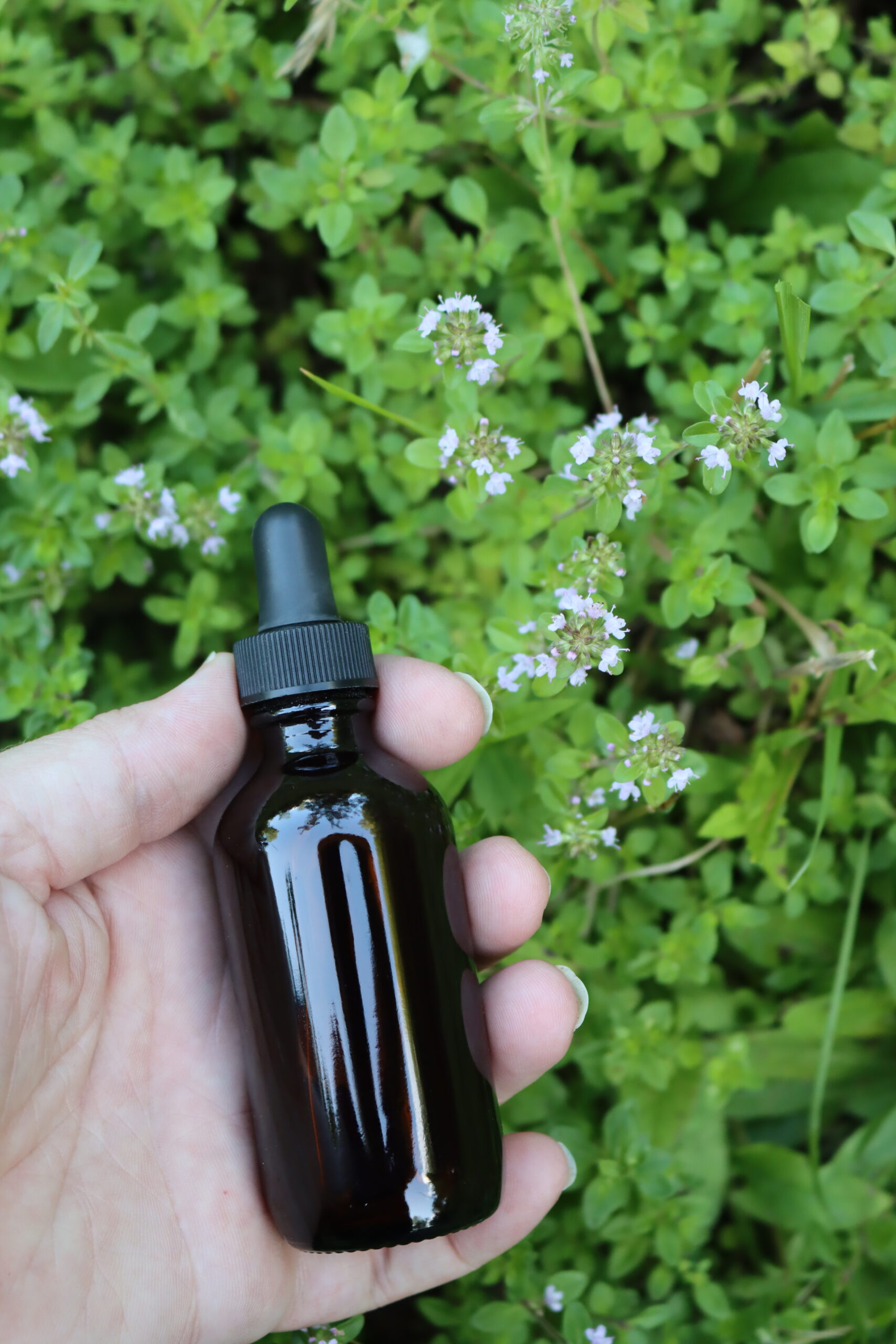
How to Make Thyme Tincture
To create a thyme tincture, you will need the following ingredients and tools:
- Fresh or dried thyme
- Vodka* (or any other drinkable alcohol with at least 80 proof/40 percent — no need for premium options, I prefer Smirnoff because it’s affordable and has a neutral flavor)**
- One-pint mason jar with a lid (amber glass is preferred, but any jar kept out of light will work)
- Funnel
- Cheesecloth
- Fine mesh strainer
- Amber glass tincture bottles (with dropper)
*The Herbal Academy recommends using 45% alcohol when working with dried thyme and 60-70% alcohol when using fresh thyme due to its water content. For mucilaginous herbs, they suggest as low as 25% alcohol, and for resins, up to 95%. Since thyme contains both alcohol-soluble and water-soluble compounds, it falls in the middle range.
Never use isopropyl or rubbing alcohol in tinctures (or any remedy meant for internal use). This type of alcohol is toxic, and it is only suitable for external purposes. If you prefer to avoid alcohol, you can make a herbal glycerite or use herbal vinegars, both of which work well with thyme.
To start making your tincture, fill the mason jar about 3/4 of the way with fresh thyme (or halfway if using dried thyme). Pour your chosen alcohol over the thyme until it’s fully submerged, then seal the jar tightly with its lid.
Store the jar in a cool, dark spot, and give it a gentle shake every few days. Daily shaking is best, but tinctures are generally forgiving if you shake it at least once a week.
After about 4 to 6 weeks, it’s time to strain your tincture. Line a funnel with several layers of cheesecloth, then pour the tincture into amber glass tincture bottles, pressing the thyme to extract as much liquid as possible.
Once the tincture has been decanted, label the bottles with the date of preparation and the suggested dosage (I use masking tape and a marker to label the bottles, which can be easily removed later).
While 4 to 6 weeks might seem like a long wait if you’re in urgent need of relief, you can always purchase a pre-made thyme tincture while your homemade batch infuses. Store-bought tinctures tend to be pricier, but they are ready to use right away.
Thyme Tincture Dosage
For the most accurate dosage tailored to your needs, it’s best to consult a clinical herbalist. Typically, the recommended dose for thyme tincture is 1 to 2 droppers full, taken 2 to 3 times daily, or as needed. Since thyme is commonly used as a culinary herb, there’s little concern about overuse unless you’re consuming it in large quantities.
Thyme Formulations
These days, since I have more herbs on hand than I did back when I was a budding herbalist just working out of a kitchen pantry, I tend to combine thyme with elecampane, white pine or licorice as a gentle (but effective) cough remedy.
If you’re interested in the science behind combining herbs to enhance their effectiveness, I’d recommend taking this online course in Mastering Herbal Formulations from the Herbal Academy. It covers the science of blending herbs into homemade formulations in detail.
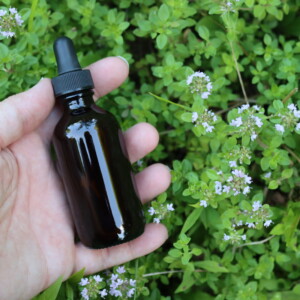
Thyme Tincture
Equipment
Ingredients
- Thyme dried or fresh
- Neutral Spirit such as vodka*
Instructions
- Begin by filling a clean mason jar about halfway with dried thyme. If using fresh thyme, pack the jar loosely to allow space for the herbs to expand as they infuse. Fresh thyme will require a bit more room than dried, so keep this in mind when filling the jar.
- Pour your chosen alcohol over the thyme until the plant material is completely submerged. Vodka is the most commonly used alcohol for tinctures because it has a neutral flavor, but you can also use brandy, rum, or any other high-proof alcohol (at least 60 proof). The alcohol helps extract the beneficial compounds from the thyme, so it’s important that the herbs are fully covered.
- Once the jar is filled, seal it with a tight-fitting lid and shake gently to mix the alcohol and thyme. Store the jar in a cool, dark place for about 6 to 8 weeks. A cupboard or dark shelf is ideal.
- Every few days, give the jar a gentle shake to help with the extraction process. During this time, check that the thyme remains fully submerged in the alcohol—if any plant material floats above the liquid, add a bit more alcohol to cover it.
- After 6 to 8 weeks, strain the tincture through a cheesecloth or fine mesh strainer into a clean dark glass bottle. Use a funnel to guide the liquid into the bottle and press on the thyme to extract all of the liquid. Discard the thyme once the tincture is fully strained.
- Label the bottle with the name of the herb, the date it was made, and any dosage instructions. Store the tincture in a cool, dark place, away from sunlight, for long-term preservation.
Notes
Expected Yield
The amount of tincture you get will depend on whether you're using fresh or dried thyme. Fresh herbs will release more liquid into the tincture, while dried thyme may absorb some of the alcohol, resulting in a slightly lower yield. For a quart jar, you will typically need around 2 to 3 cups of alcohol, or 1 to 1.5 cups if you're using a pint-sized jar. Be sure to check the alcohol level regularly and top it off if needed to keep the thyme submerged.Glycerite Tincture (Alcohol-Free Option)
If you'd like to avoid alcohol, you can make a glycerite tincture. For this method, cover the dried thyme with a mixture of 3 parts vegetable glycerin and 1 part distilled water. If using fresh thyme, you can omit the water and use just glycerin. As with the alcohol tincture, shake the glycerite every day to aid in the extraction, and proceed with the same steps once the infusion is complete.Disclaimer on Homemade Herbal Remedies
I’ve been foraging wild medicines and treating my family with herbal remedies for the past 20 years, but I’m self-taught. Be aware that I am not a clinical herbalist, and this is based on my own research and personal experience using medicinal plants. I do not claim to have the experience that’d qualify me to advise you on your health, and I’m only providing this as a reference to encourage a broader interest in medicinal plants.
Please use this as a jumping-off point, but always do your own research and verify anything you read with multiple sources.
It’s always possible to have an adverse reaction to any medicinal herb, and plenty of people are allergic to even gentle herbs like chamomile. Always consult your doctor or a certified herbalist before trying any new medicinal plant. Often, they can have unintended reactions in combination with other herbs and supplements, and many herbs have side effects even when they are effective for their intended purpose.
If you are seriously interested in herbal medicine, I’d suggest investing in a course in herbal medicine, and I’d recommend any of the online courses put out by the Herbal Academy of New England. Specifically, the introduction to herbal medicine course and the family herbalist group of courses.
For resources related specifically to tinctures,I’d recommend the Herbal Academy’s Tincture Making Course which covers everything you could ever want to know about making more than 100 different herbal tinctures, as well as half a dozen tincturing methods.
They also have a mushroom course, covering both medicinal and edible mushrooms, and a Botany and Wildcrafting Course. I’ve taken both and they’re informative, inspiring, and artfully presented.
Herbal Tinctures
Interested in making other homemade herbal tinctures?
- Yarrow Tincture
- Chickweed Tincture
- Elderberry Tincture
- Dandelion Tincture
- Burdock Tincture
- Echinacea Tincture
Herbal Medicine Making
Herbal medicines don’t stop at tinctures! Learn how to make more homemade medicine…
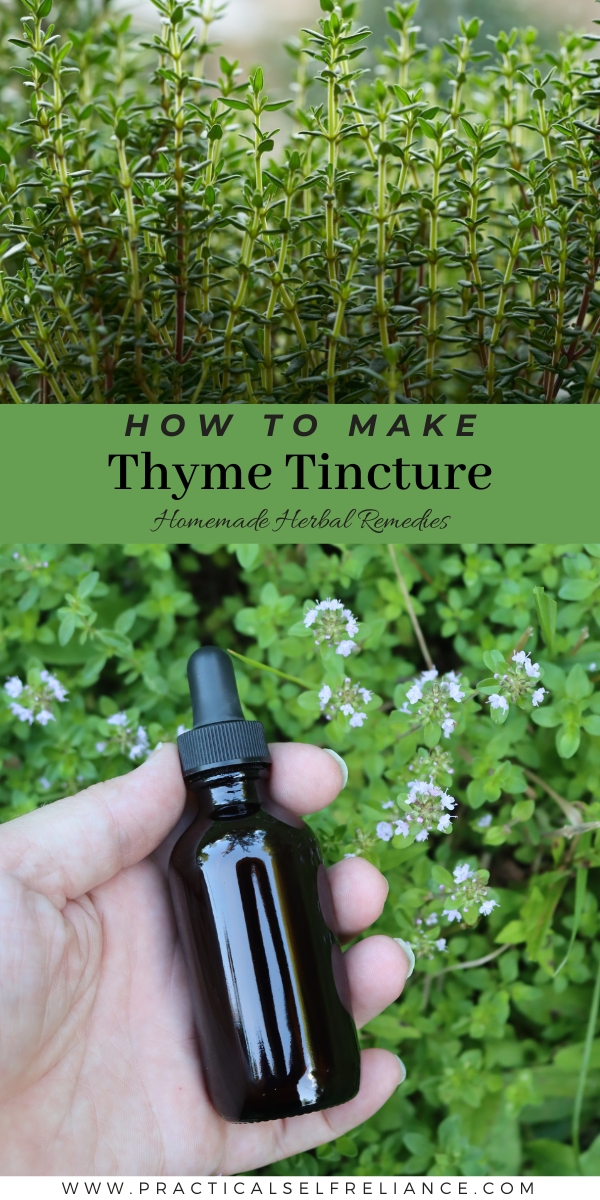
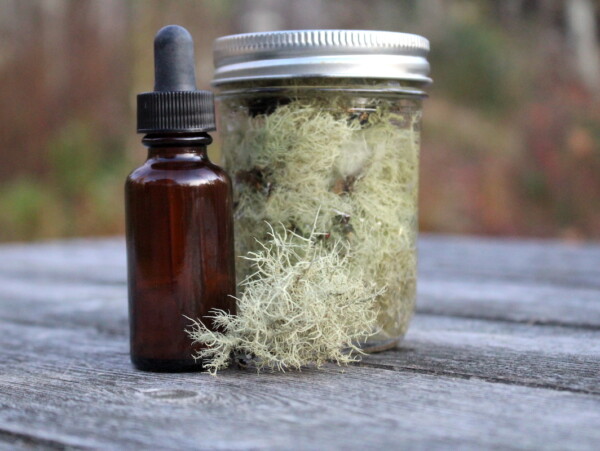
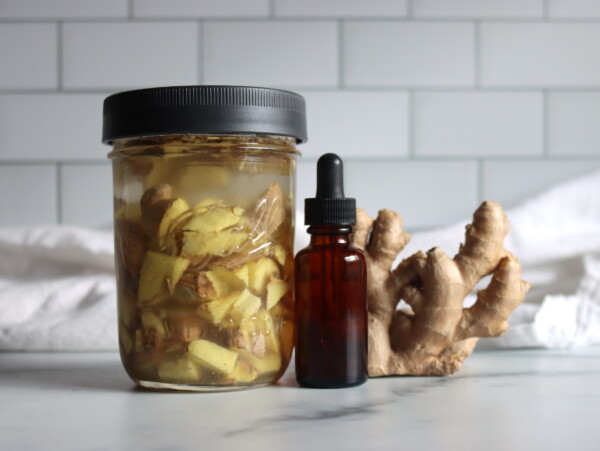
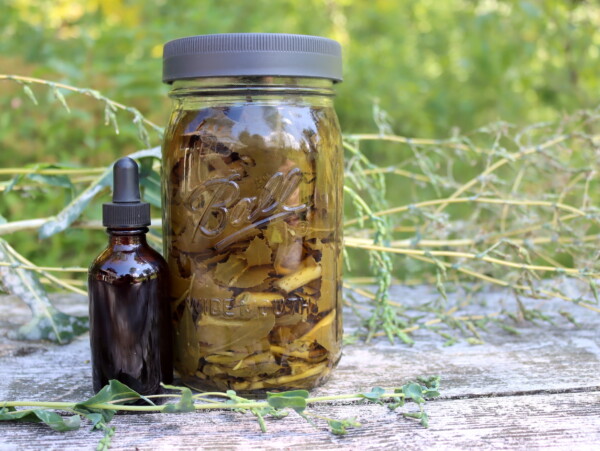
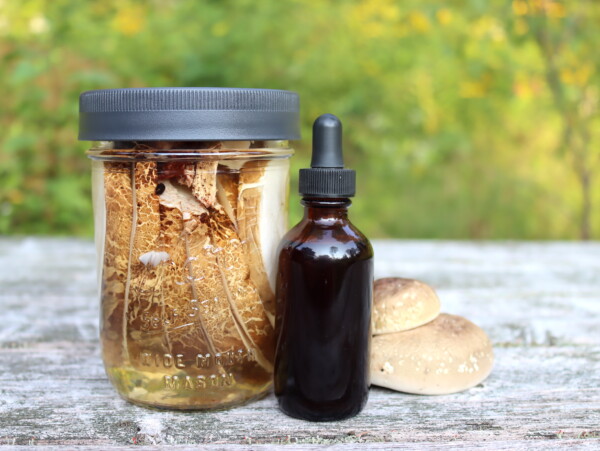
Good instructions
This is consistent with other methods. I’m not sure if I should take out the woody stems, but that’s what I will do.
I generally leave in the woody stems, they have the same medicinal properties. The only reason you take them out for cooking is texture, but they’re being strained out here, so they’re fine to include.
WHen adding fresh thyme to the jar, are you using the whole thyme sprig or picking the leaves off the stems?
I normally strip the leaves off the stems.
I heard it is possible to make tinctures with apple cider vinegar. Is this correct? I wonder if it has an impact on the tincture’s life? I;d love info please, thanks so much.
You can make an infusion with vinegar but it’s not technically called a tincture unless it is made with alcohol. Vinegar has a very long shelf life so that’s not really an issue. You do want to pay attention to the specific constituents that you’re wanting to pull from the herb. Some constituents are soluble in alcohol, some in water and some if fats. Using a different medium for the infusion can give you different benefits from the plant.
Thanks so much for your reply. I didn’t realise it was that intricate (being an amateur who loves making tinctures), so for ease I will stick with alcohol, can’t really go that wrong with it :). My reason for asking was that ACV is so much cheaper than alcohol, certainly here in the UK. Thanks again 🙂
You’re very welcome.
What a Wonderfully worded and thoughtful explanation of how to make tinctures that anyone can follow. Thank you!